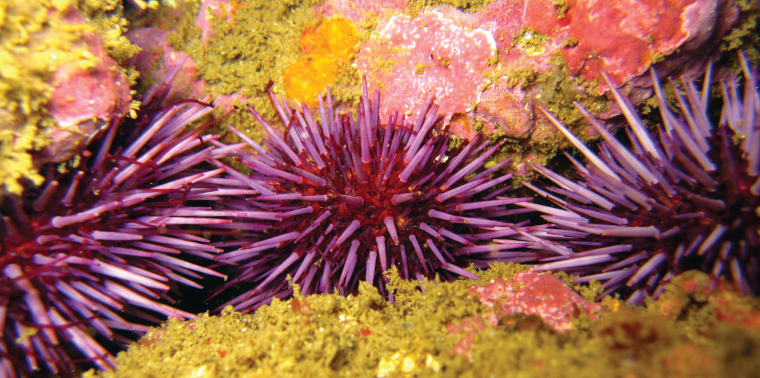As Kleypas explains, such studies will help us understand if “a community is going to change a lot or not” under ocean acidification and how any changes that do occur might affect the community’s ecological resilience. Changes to a community’s anchor or keystone species—one that plays a crucial role in an ecosystem’s function—she explains, are the most likely to affect the whole food web.
By learning which species are most vulnerable to acidification and which are better able to adapt, scientists can target conservation measures aimed at protecting those species, explains Kelly. This could involve curtailing other pollutants or development that’s adversely impacting vulnerable species and habitat, including by identifying potential reserves. Such actions can’t remove excess CO2 already in the system, but they can help build resilience. This could be particularly helpful where important fisheries may be affected, says Kelly. But, cautions Evans, “we really don’t know yet what it takes to survive in a low pH ocean, and we need that information to set conservation priorities.”
Get a Grip
Yet these are but short-term strategies as the world tries to get a grip on the carbon emissions that are ultimately responsible for ocean acidification.
“First and foremost,” says NOAA outgoing administrator Jane Lubchenco, “we need to demand that our elected representatives take seriously the need to reduce carbon emissions, and that’s true at a national level but also at the local level.”
The process of ocean acidification, like the other manifestations of climate change prompted by excessive atmospheric CO2, now cannot be reversed entirely. But with swift and dramatic action, the rate of change might be slowed. And to help lessen acidification’s impacts, scientists suggest addressing not only carbon emissions but other environmental stressors that can exacerbate these effects as well. We “also need to reduce other sources of pollution,” including excess nutrients from both urban and rural sources, Lubchenco says.
This is exactly the strategy Washington state’s Blue Ribbon Panel on Ocean Acidification recommended in a report released in November. The report formed the basis of an executive order signed by Washington governor Chris Gregoire the same day. The first such policy aimed at tackling ocean acidification, both the report and the executive order (designed to implement the report’s recommendations), combine strategies to reduce CO2 emissions and other pollution that exacerbates acidification, along with $3.3 million in funding for research and implementation. The recommendations are also be part of legislation Washington state senator and blue ribbon panel member Kevin Ranker recently introduced—and that he says he hopes will be copied by other coastal states.
“We have a lot of work to do,” says Lubchenco, noting that most people in the U.S. have not yet heard of ocean acidification. “But,” she says, “if they like eating oysters or salmon or enjoy watching whales or scuba diving in coral reefs, they should be paying attention—because it’s a serious threat.”
“The basic policy message,” says Palumbi, is that carbon emissions are “a global pollutant, and we have to fix this problem.” While a shellfish hatchery may be able to control the chemistry of water in its tanks or choose a different species to farm, the same can’t be done in the world’s wild oceans.
In the meantime, as effects of ocean acidification play out, scientists and policy makers continue the quest to understand how individual species and marine communities will fare and how this information can be used to protect them before even more dramatic changes occur. “When it comes to ocean acidification,” says Lubchenco, “we’re all still explorers.”
Ensia shares solutions-focused stories free of charge through our online magazine and partner media. That means audiences around the world have ready access to stories that can — and do — help them shape a better future. If you value our work, please show your support today.
Yes, I'll support Ensia!
